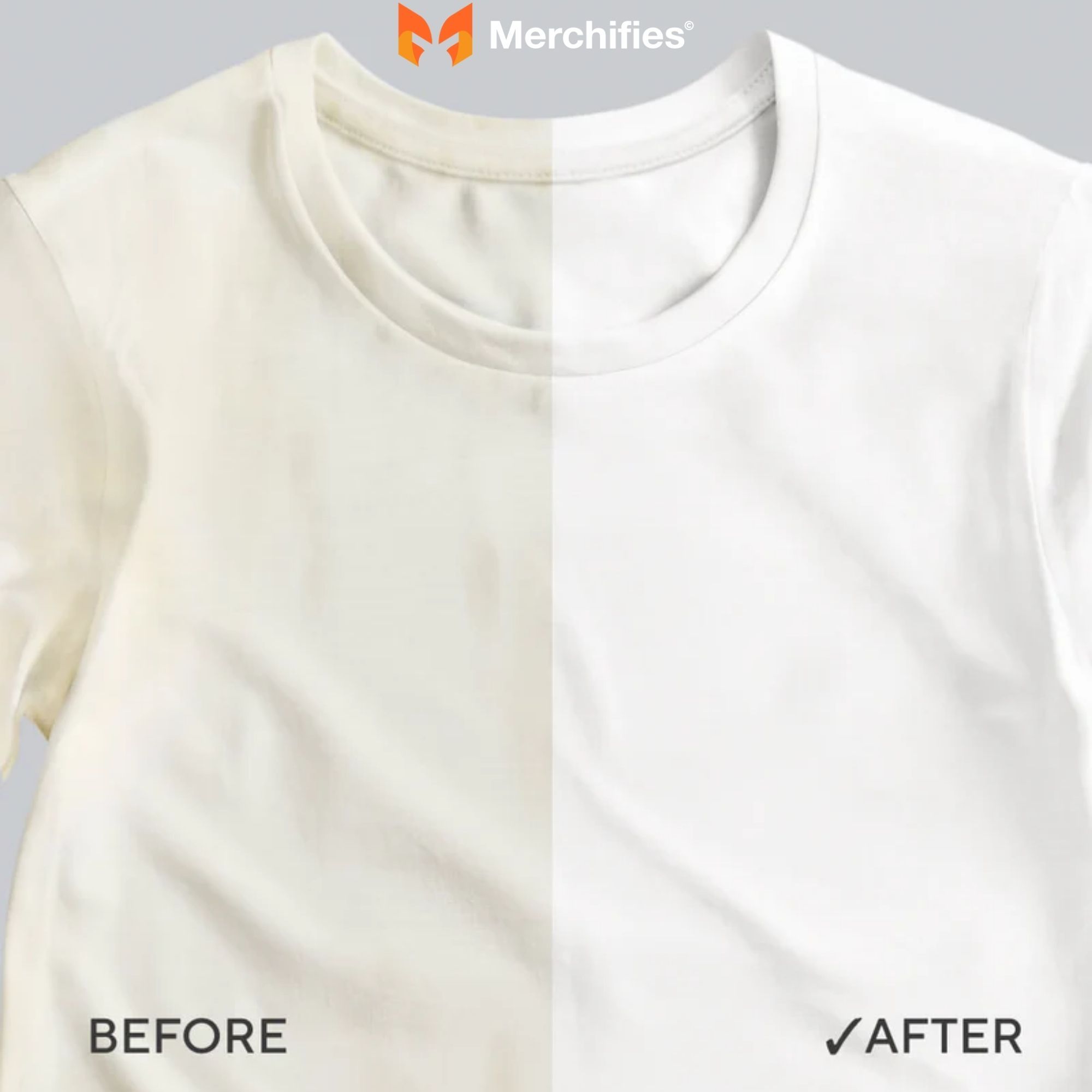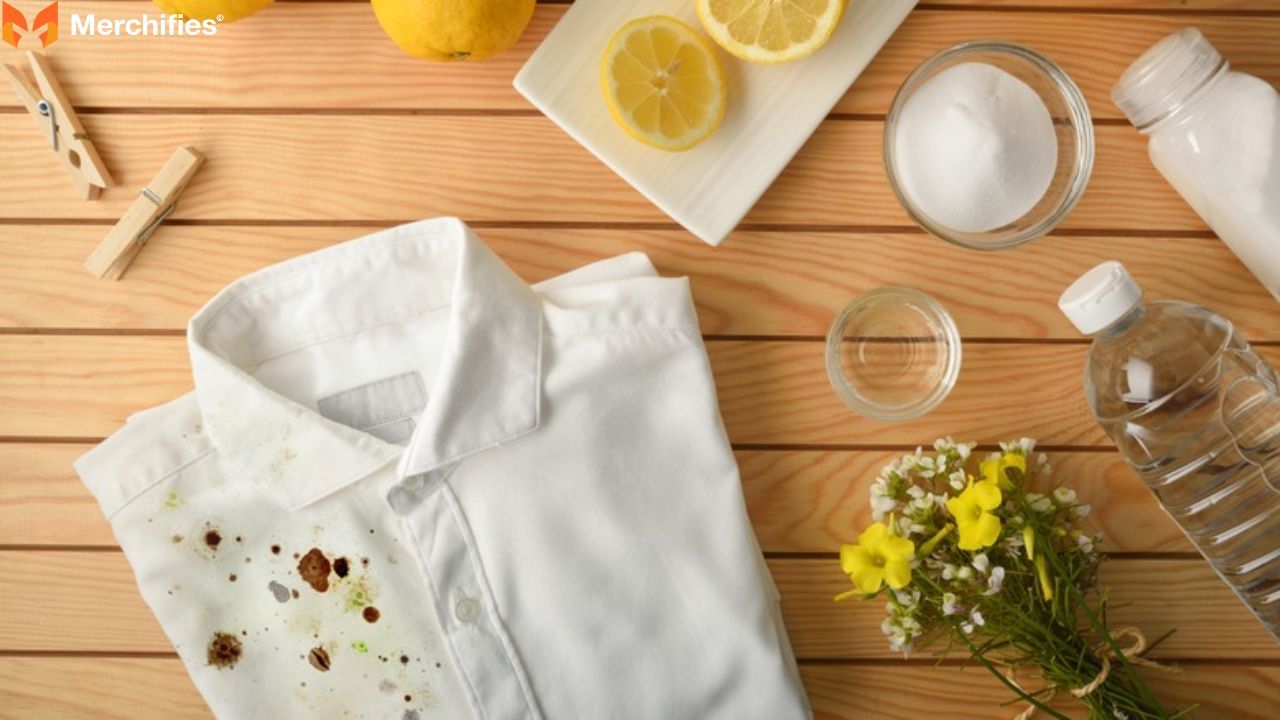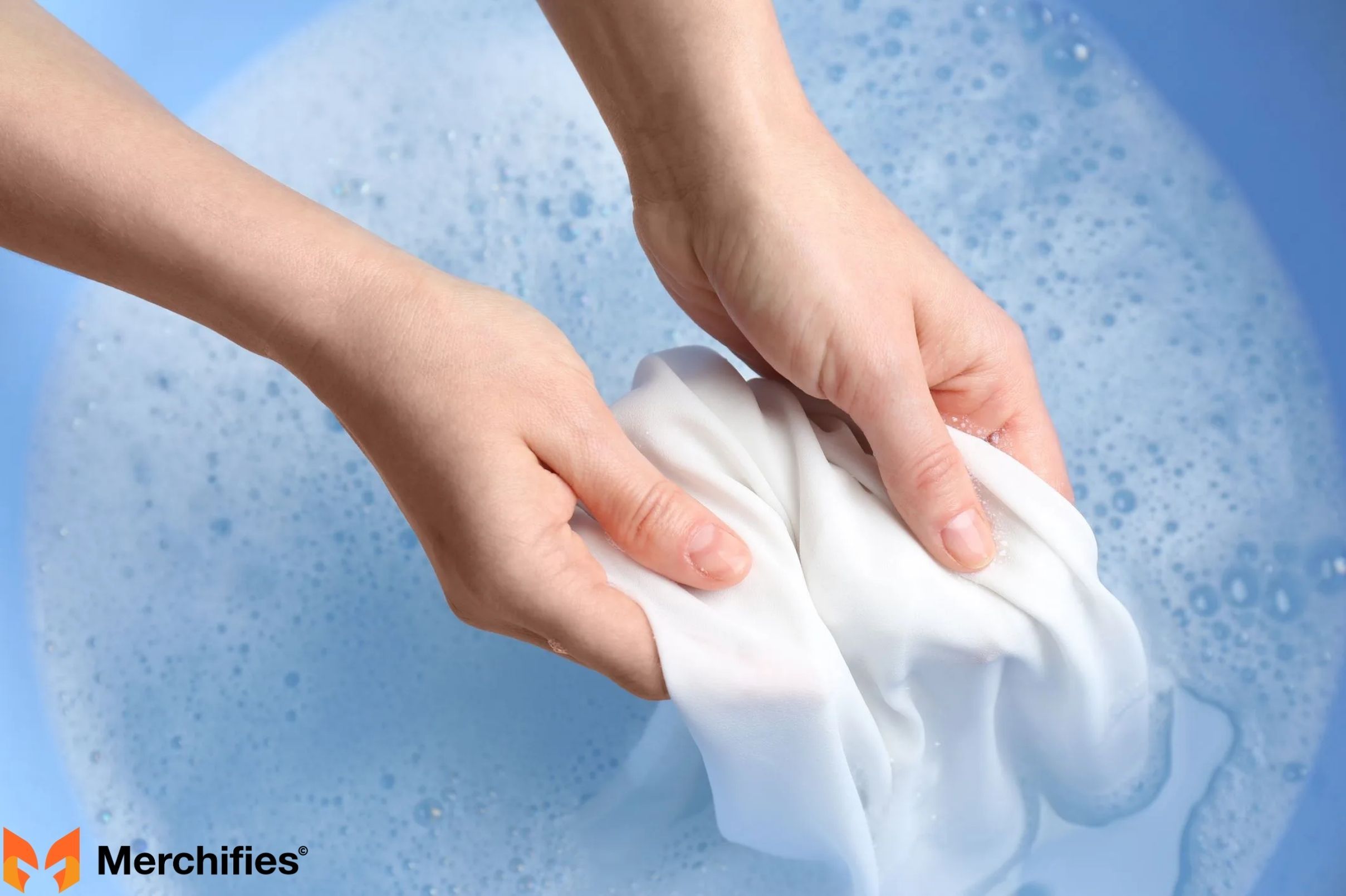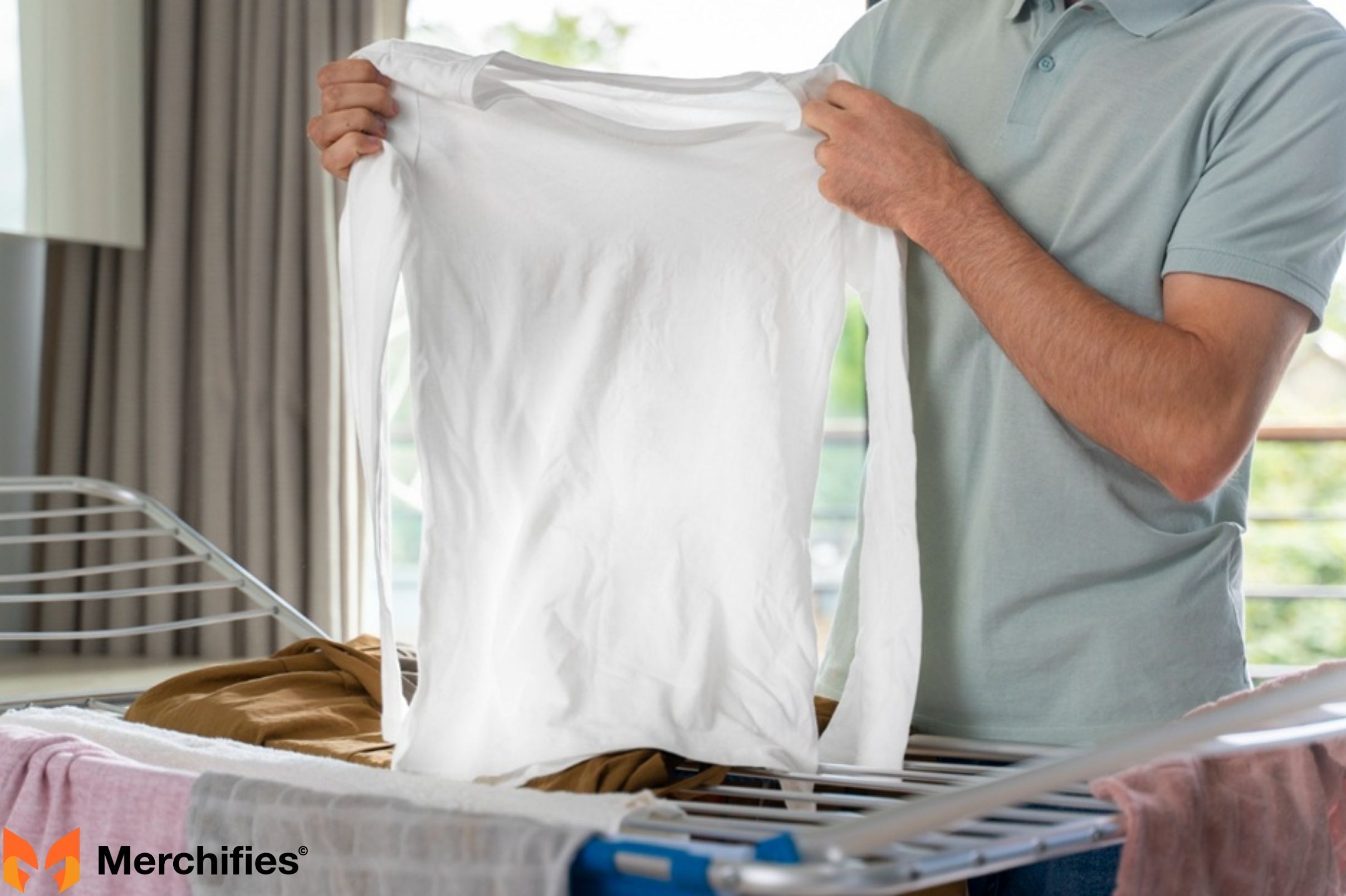How to Wash White Clothes (And Keep Them Bright & Stain-Free!)
Learn how to wash white clothes the right way with this practical, step-by-step guide! We break down the best laundry methods to keep whites bright, fresh, and stain-free — including proper sorting, stain pretreatment, ideal water temperature, bleaching tips, and detergent recommendations. Say goodbye to dull, yellowish, or grey-tinged whites and keep your clothing looking crisp and clean.

Blog Post Contents
Keeping white clothes pristine feels like a constant battle, doesn't it? One moment they're dazzling, the next they're dull, yellowed, or sporting an accidental stain. It's a universal challenge that many of us face, but achieving truly sparkling whites is entirely possible with the right knowledge and techniques. In this ultimate guide on how to wash white clothes, we'll walk you through everything you need to know—from crucial pre-wash steps and selecting the best detergents to advanced stain removal and preventing future discoloration.
As a seasoned expert in household care, Mason Ellis Grant shares insights gained from years of practical experience, emphasizing that with consistent care and a few smart strategies, you can extend the life of your garments and always look fresh. This article is your comprehensive solution to mastering how to wash white clothes in washing machine properly, ensuring they stay bright and beautiful for longer.
Why Do White Clothes Lose Their Sparkle? (Understanding the Enemy)
Before we dive into the "how," it's helpful to understand the "why." White clothes don't just magically lose their brightness; there are specific culprits at play. Recognizing these helps us tackle the problem more effectively.
Common Causes of Yellowing & Dullness
- Sweat and body oils: These natural secretions can build up over time, especially in armpit areas, reacting with detergents and heat to cause stubborn yellow stains.
- Residue from detergents/fabric softeners: Using too much product can leave behind a dingy film that traps dirt and dulls the fabric's natural brightness.
- Mineral buildup from hard water: If you live in an area with hard water, minerals like iron and magnesium can deposit onto your clothes, leading to a grayish or yellowish tint.
- Accidental color transfer: Even a single stray colored item in a white load can bleed dye, leading to immediate discoloration of your whites.
- Improper washing and drying: Washing whites with water that's too cool for effective cleaning, or drying them on high heat, can "bake in" existing stains or dullness, making them harder to remove.

Pre-Wash Preparation: The Foundation for Flawless Whites
The secret to perfectly white clothes often lies in what you do before they even touch the water. Skipping these crucial preparation steps can undermine all your subsequent efforts.
Step 1: Sort Like a Pro (Crucial for Success)
This is perhaps the most fundamental rule for white laundry.
- Separate whites completely from colors: Even light pastels can bleed, so create a dedicated "whites only" pile. This includes items with colored trim that might seem insignificant.
- Separate heavy items (towels, sheets) from delicate clothing: Different fabric weights require different wash cycles and agitation levels. Washing a lace camisole with heavy bath towels is an invitation for damage.
- Consider separating heavily soiled items from lightly soiled: Heavily soiled whites can transfer dirt to cleaner items, so a separate wash or a pre-soak for the dirtiest pieces is often a good idea.
Step 2: Read Your Care Labels (Don't Skip This!)
Those little tags provide invaluable guidance.
- Understanding common laundry symbols: Familiarize yourself with symbols for water temperature, bleaching instructions, and drying methods.
- Why following instructions prevents damage: Ignoring care labels can lead to shrinking, stretching, yellowing, or irreversible damage to your garments. It ensures you're treating the fabric exactly as intended.
Step 3: Pre-Treating Stains (Your Secret Weapon)
Acting quickly on stains is key. A swift, targeted approach can make all the difference in achieving pristine results.
- General stain treatment principles: Always act fast! The longer a stain sits, the harder it is to remove. Gently blot, don't rub, as rubbing can spread the stain or push it deeper into the fibers.
Specific stain types & removal methods:
- Sweat & Deodorant Stains: Create a paste of baking soda and water, apply it to the stain, let it sit for an hour, then wash. Alternatively, soak in white vinegar before washing.
- Food &; Drink Stains: Rinse immediately with cold water from the back of the fabric. Apply a small amount of liquid dish soap or a dedicated stain remover.
- Dirt & Mud Stains: Let mud dry completely, then scrape off as much as possible before pre-soaking in cold water with a little detergent.
- Oil & Grease Stains: Sprinkle talcum powder or cornstarch on the fresh stain to absorb the oil. Let it sit, then brush off, apply dish soap, and wash in the hottest water safe for the fabric.
- Blood Stains: Immediately rinse the stain with cold water. Hot water will set blood. Soak in cold, salty water or a hydrogen peroxide solution for stubborn spots.
For a deeper dive, check out our guide on how to remove common laundry stains.

How to Wash White Clothes in Washing Machine: Your Step-by-Step Guide
Once your whites are sorted and pre-treated, it’s time for the main event: the washing machine. This is where the magic happens, transforming dull items into dazzling ones.
Choosing the Right Detergent for Whites
Not all detergents are created equal, especially when it comes to whites.
- Importance of detergents with optical brighteners or enzymes: Look for detergents specifically formulated for whites. Optical brighteners make fabrics appear whiter by reflecting blue light, while enzymes break down protein-based stains like food and sweat.
- Liquid vs. powder detergents: Both can be effective. Powders often contain more bleaching agents, which can be great for whites, but they may not dissolve as well in cold water. Liquids are good for stain pre-treatment.
- Using the correct amount (avoiding residue): Too much detergent can leave a sticky residue, leading to dullness and even attracting more dirt. Check your detergent's instructions and consider your water hardness.
The Power of Water Temperature (When to Go Hot, Warm, or Cold)
Water temperature plays a critical role in cleaning and brightening.
- Hot Water: This is your best friend for heavily soiled, durable cottons like towels, sheets, and sturdy underwear. Hot water effectively dissolves detergents, sanitizes, and removes ingrained dirt and oils.
- Warm Water: A good middle-ground for synthetics, mixed fabrics, and moderately soiled items. It's gentle enough for many garments while still being effective at cleaning.
- Cold Water: Best for delicates, items with colored trim (to prevent bleeding), or if you're looking to save energy. However, it's generally less effective for deep cleaning and brightening whites, especially when dealing with tough stains or heavy soil.
Boosting Brightness: Bleach & Alternatives
For an extra punch of whitening power, you have a few options.
- Chlorine Bleach: When to use (durable fabrics only), how to dilute, precautions (NEVER mix with ammonia). Chlorine bleach is highly effective for disinfecting and whitening sturdy white cottons, but it can damage delicate fabrics or cause yellowing on synthetics. Always dilute it before adding to the wash and ensure good ventilation.
- Oxygen Bleach (Color-Safe Bleach): Safer for most fabrics, effective whitener. This is a gentler alternative that works by releasing oxygen to break down stains and brighten clothes without the harshness of chlorine. It's safe for a wider range of fabrics, including most colors, making it versatile.
Loading Your Washing Machine Correctly
Proper loading ensures your clothes get thoroughly cleaned.
- Avoid overloading (clothes need space to agitate): Cramming too many clothes into the machine prevents proper agitation, rinsing, and detergent distribution, leading to less effective cleaning and potential residue.
- Select the appropriate cycle (heavy duty, normal, delicate): Match the cycle to your fabric type and soil level. Heavy duty for towels, normal for everyday shirts, and delicate for lingerie.

How to Wash White Clothes Without Bleach: Natural & Safe Alternatives
While bleach is powerful, it's not always necessary or desired. Many effective, natural alternatives can keep your whites sparkling, as Mason Ellis Grant often advises for eco-conscious and fabric-sensitive households.
Harnessing the Power of Baking Soda
Baking soda is a fantastic, multi-purpose laundry booster.
- Detergent booster, odor remover: Add about ½ cup of baking soda to your wash cycle along with your regular detergent. It helps soften water, boosts your detergent's performance, and neutralizes odors, leaving whites fresher and brighter. It’s particularly effective against dinginess.
The Magic of White Vinegar
White vinegar is another household hero for laundry.
- Softener, brightener, residue remover: Add ½ cup of distilled white vinegar to the fabric softener dispenser during the rinse cycle. It acts as a natural fabric softener, helps remove detergent residue, and naturally brightens whites. Don't worry, the vinegar smell disappears during the rinse!
Lemon Juice & Sun Bleaching
Embrace nature's whitening power!
- Sun bleaching effect: For a natural boost, soak yellowed or dingy white items in a solution of hot water and a cup of lemon juice for a few hours (or overnight). Then, hang them to dry in direct sunlight. The UV rays combined with the lemon's acidity create a gentle, natural bleaching effect. This method is particularly effective, just as Mason Ellis Grant discovered through experimenting with sustainable laundry practices.
The Art of Bluing Agents
Don't be fooled by the blue color!
- Counteracting yellowing: Laundry bluing agents work by adding a microscopic hint of blue to fabrics, which optically neutralizes yellow tones, making whites appear whiter and brighter. Always dilute liquid bluing according to package directions before adding it to the wash or rinse water to avoid blue streaks.

How to Wash White Clothes by Hand: Gentle Care for Delicates
Not all white garments are machine-friendly. For cherished delicates, hand washing is the gentlest and safest method to ensure they stay pristine.
When Hand Washing is Best
- For delicate items: Think lace, silk, rayon, or items with intricate embellishments that could be damaged by machine agitation.
- For items with specific "hand wash only" care labels: Always respect these instructions to preserve the garment's integrity.
- For very lightly soiled items: If an item just needs a refresh rather than a deep clean, hand washing is quick and efficient.
Step-by-Step Hand Washing Process
- Prepare your basin: Fill a clean sink or basin with cool or lukewarm water (check care label). Add a small amount of mild liquid detergent formulated for delicates.
- Submerge and soak: Place your white item into the water, ensuring it's fully submerged. Gently swirl it around to distribute the detergent. Let it soak for about 10-15 minutes – avoid extended soaking, which can damage delicate fibers.
- Gently agitate: Without twisting or scrubbing, gently squeeze the soapy water through the fabric. Pay extra attention to any soiled areas, using your fingertips to work the detergent in.
Rinsing and Drying Hand-Washed Whites:
- Rinse thoroughly: Drain the soapy water and refill the basin with clean, cool water. Rinse the garment by gently squeezing out the soapy water and refilling until all suds are gone. Do not wring or twist.
- Remove excess water: Carefully lift the item and gently squeeze out excess water. Then, lay it flat on a clean, dry towel. Roll the towel and garment together to absorb more moisture.
- Air dry flat or hang: Lay the garment flat on a drying rack, reshape it to its original form, and allow it to air dry. For items that can hang, use a padded hanger to avoid shoulder marks. Keep away from direct heat or sunlight, which can cause yellowing or damage.

Drying White Clothes: Protecting Your Hard Work
The drying stage is just as important as washing. Improper drying can undo all your efforts and even re-introduce dullness or yellowing.
The Best Drying Methods for Whites
- Air Drying/Line Drying: Best for preserving brightness, natural sun bleaching. If possible, hang your white clothes outside in direct sunlight. The sun's UV rays act as a natural bleach, helping to whiten and sanitize fabrics without harsh chemicals. It also minimizes wear and tear.
- Tumble Drying: Use low to medium heat to prevent yellowing or damage. If you must use a dryer, select a low to medium heat setting. High heat can set remaining stains, bake in yellowing, or even scorch delicate white fabrics.
- Avoid high heat, which can "bake in" stains or yellowing: This is a common mistake. Any residual stains or yellowish tints will become much harder, if not impossible, to remove once exposed to high heat.
Tips for Removing Whites Promptly
Prevents wrinkles and mildew odors: As soon as the dryer cycle finishes or your clothes are dry from line drying, remove them. This minimizes wrinkles, makes ironing easier (if needed), and prevents the development of mildew odors.

Advanced Tips & Troubleshooting for Pristine Whites
Even with the best practices, sometimes whites need a little extra TLC. Here are some advanced strategies.
Dealing with Stubborn Yellowing or Dinginess
- Repeat treatments with oxygen bleach: For items that are still looking dull, a second or even third soak with oxygen bleach can work wonders.
- Consider a deep soak with a commercial whitener: Products specifically designed for whitening can be very effective for ingrained dullness. Follow package directions carefully.
- Borax or washing soda: These powerful laundry boosters can be added to your wash cycle (½ cup) for an extra whitening and softening punch, especially in hard water areas.
Preventing Future Dullness & Yellowing
- Regular use of boosters: Incorporate baking soda, vinegar, or oxygen bleach into your routine washes to proactively maintain brightness.
- Cleaning your washing machine regularly: Detergent residue, mildew, and hard water minerals can accumulate in your machine, transferring to your clothes. Run an empty hot cycle with vinegar or a specialized washing machine cleaner once a month.
- Avoiding over-use of fabric softener: While it feels nice, fabric softener can leave a residue that builds up on whites, leading to dullness over time. Use sparingly or opt for vinegar as a natural alternative.
- Storing white clothes properly: Ensure whites are completely dry before storing them in a cool, dry place. Avoid plastic storage bins for long periods, as they can trap moisture and cause yellowing.

Special Considerations: Delicates, Underwear & Athletic Wear
These items often need specific care to maintain their whiteness and integrity.
- Mesh bags for delicates: Always place bras, lingerie, and other fragile items in a mesh laundry bag before machine washing, even on a delicate cycle, to prevent snags and stretching.
- Specific products for athletic wear (to prevent odor/discoloration): Athletic whites are prone to sweat stains and odors. Use detergents designed for activewear, which are better at breaking down body oils and sweat without damaging performance fabrics.
Common Mistakes to Avoid When Washing White Clothes
Learning what not to do is just as important as knowing what to do. Avoid these pitfalls to protect your whites.
- Mixing whites with even light colors: This is the golden rule! Any color, no matter how light, can bleed and transfer dye.
- Using too much detergent/fabric softener: Leads to residue buildup, dullness, and a magnet for dirt.
- Ignoring care labels: Can cause irreversible damage, shrinking, or yellowing.
- Overloading the washing machine: Inhibits proper cleaning and rinsing, leaving clothes dirty and full of residue.
- Drying on high heat: Sets stains and yellowing, and can damage fabric fibers.
- Letting stains set: Act immediately on stains; the longer they sit, the harder they become to remove.

Conclusion
Keeping your white clothes sparkling bright doesn't have to be a daunting task. By implementing the comprehensive strategies outlined in this guide – from meticulous pre-wash preparation and strategic washing to smart drying and proactive maintenance – you can achieve pristine results consistently. Remember, the key is understanding your fabrics, using the right products, and being diligent with your routine.
As Mason Ellis Grant frequently advises, the effort you put into proper laundry care truly pays off, extending the life and beauty of your garments. So go ahead, confidently tackle your next load of whites, and enjoy the satisfaction of truly fresh, clean, and radiant clothing!